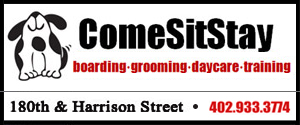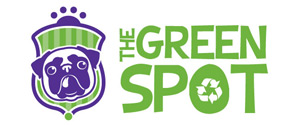- Do you subscribe to Dharma Dog Training’s Newsletter? You should.
- A Unique Campaign from The Humane Society of the United States
- Rabid bats in Omaha- Stay safe, prepared with these tips
- Springtime Activities in Omaha
- Mill Dog Monthly from Bailing Out Benji
- World Spay Day, Legislative Alert in Nebraska
- Attend the Nebraska Rescue Council’s monthly meeting this Saturday
- Five Hard-to-Ignore Reasons to Adopt!
- Paws in Pink to Benefit Breast Cancer Foundation
- VCA, Inc. Acquires MidWest Vet Specialists from Kansas State University
Technology, education at the center of planned, state-of-the-art Humane Society

In November of 2018, ground will be broken on the Nebraska Humane Society’s first major renovation project in two decades. The $14 million transformation will do much to further the shelter’s goals of educating the public and providing a safe space for displaced animals while they await adoption. The project is scheduled to complete in the spring of 2020 and will be paid for with private capital, said Pam Wiese, shelter spokeswoman.
The new Judy Varner Adoption and Education Center, named for the shelter’s former president who retired from the 2016 after 18 years of service to NHS, will include many technological resources for adopters and improvements for animals under the shelter’s care.
Among the upgrades for animals at the shelter include wider kennels for dogs (current kennels can promote pacing, contributing to anxiety, Wiese said), vertical growth in the expanded cattery (which will give cats more space and promote more natural movement), and lower ceilings and materials that more effectively absorb sound (which will reduce anxiety and stress in animals).
“I’m most excited about the plans because animal sheltering has changed in the 20 years since this shelter was conceptualized,” Wiese said. “It was state of the art then, but we’ve learned so much about housing animals, stress in shelters and what can be done to improve their lives while they are here.”
The enhanced comfort of the shelter will result in less stress for animals and animals will, theoretically, appear more like themselves, not anxious shelter-dwellers. Less stress also means less fragility and sickness which, in turn, means fewer resources expended, but also, for them, a shorter time in the shelter.
“Happy pets present better, so they won’t stay here as long,” Wiese said. That means the shelter won’t have to increase its footprint (ie: provide more kennels) in order to serve more animals. “We should be able to move them through the system faster and help more of them. We also will be doing it in a more comfortable and stress-free way.”
Another thing Wiese (and, surely, the cats) is excited about: Adopters will be able to get into the pods with the cats and meet the up close and personal, without moving them to a room and completely stressing them out. Also known to be stressed are the dogs that are in the shelter’s behavior modification program. These dogs are housed behind the scenes to keep them more comfortable than they’d be in always-viewable kennels. Dogs in this program are healthy, but not quite as adoptable as the shelter knows they can be because of a behavior issue they’re working on. “Either they get too amped up with all the people walking by, or they are terrified by the public,” Wiese said. Currently, people need to make an appointment to see the dogs and it’s a multi-step process. With the renovation, those dogs will be in areas where the public can view them, but they can’t see people walking by. The behavior staff will be right there to help with adoptions, too. All of this will create a better opportunity to see and meet these animals in a less stressful environment.
Since the shelter’s last renovation, technology has come a long way, too. “We are excited about the prospect of offering people information pertinent to pet owners,” Wiese said. “Whether its new laws, recalls, tips on behavior help or events and opportunities for them to bond with their pets, we think communication is key.”
The shelter is also looking at different programs to offer more and better information to our adopters. Plans already include enhanced public areas with separate check-in and check-out stations. Private counseling areas for owners who are surrendering pets or bringing in a deceased animal for cremation also are planned.
Wondering what the shelter will look like? Take a peek at a couple of concept images here.
Judy Varner, former president at NHS and the new space’s namesake, completed the last renovation, taking an out-dated, 23,000 square foot building and turning it into a full campus encompassing 4 buildings totaling 100,000+ square feet and 13 acres, Wiese said. During her tenure, NHS successfully completed several capital campaigns for improvements, established a Foundation to manage and increase the endowment fund and implemented numerous new programs to benefit the animals and the community. The organization now has an annual budget of $12,000,000, 150+ employees and provides care for over 20,000 animals annually.
For her efforts, Judy was recognized and awarded the Big O Greater Omaha Chamber Excellence Award as the 2011 Business Woman of the Year.
During Judy’s tenure at NHS more than 142,610 animals were adopted into new homes. More than 54,606 were returned to grateful owners. As times change, the vision of the Nebraska Humane Society has grown past simple adoptions to a holistic approach for the entire community. The shelter’s vision to provide a good home for every pet by the year 2020, pushed Judy and her staff to figure out ways to keep animals in homes, offering behavior help, resources for those on fixed incomes, and educational programs.
Every decision at the shelter was made with the welfare of animals at its core: putting vets on staff, implementing behavior programs, utilizing volunteers to foster and enrich, and offering all animals more space.
Judy built the current shelter into one of the premier humane societies in the nation. And now in her name, CEO Nancy Hintz and lead donors will improve upon her creation.
Stay tuned to Pets in Omaha for more updates as we’re aware of them and follow the Nebraska Humane Society on Facebook here.
Latest News
-
Join Us at Pick A Pooch 2025: A Fun-Filled Weekend for the Whole Family
A Fun-Filled Weekend for Pet Lovers and Families Alike Mark...
- Posted 1 year ago
- 0
-
Beardmore Presenting Sponsor At This Years Pick-A-Pooch event
🐾 We are thrilled to announce that Beardmore Subaru is...
- Posted 1 month ago
- 0
-
How Having A Pet Can Change Your Life
Having a pet can open your heart in ways that...
- Posted 3 months ago
- 0
-
How To Improve The Life Of Your Senior Pet
Do you have an elderly fur baby and want to...
- Posted 3 months ago
- 0
-
Springtime Activities To Enjoy With Your Furry Friends
Are you preparing for warmer weather and want some ideas...
- Posted 4 months ago
- 0
-
Pros And Cons Of Microchipping Your Pets
Have you considered whether your pets should be microchipped and...
- Posted 5 months ago
- 0
-
The Best New Fun Toys For Dogs And Cats
The Best New Fun Toys For Dogs And Cats Did...
- Posted 5 months ago
- 0
-
Heartfelt Ways To Show Your Pet You Love Them
Did you know there are more ways to show your...
- Posted 6 months ago
- 0



















You must be logged in to post a comment Login